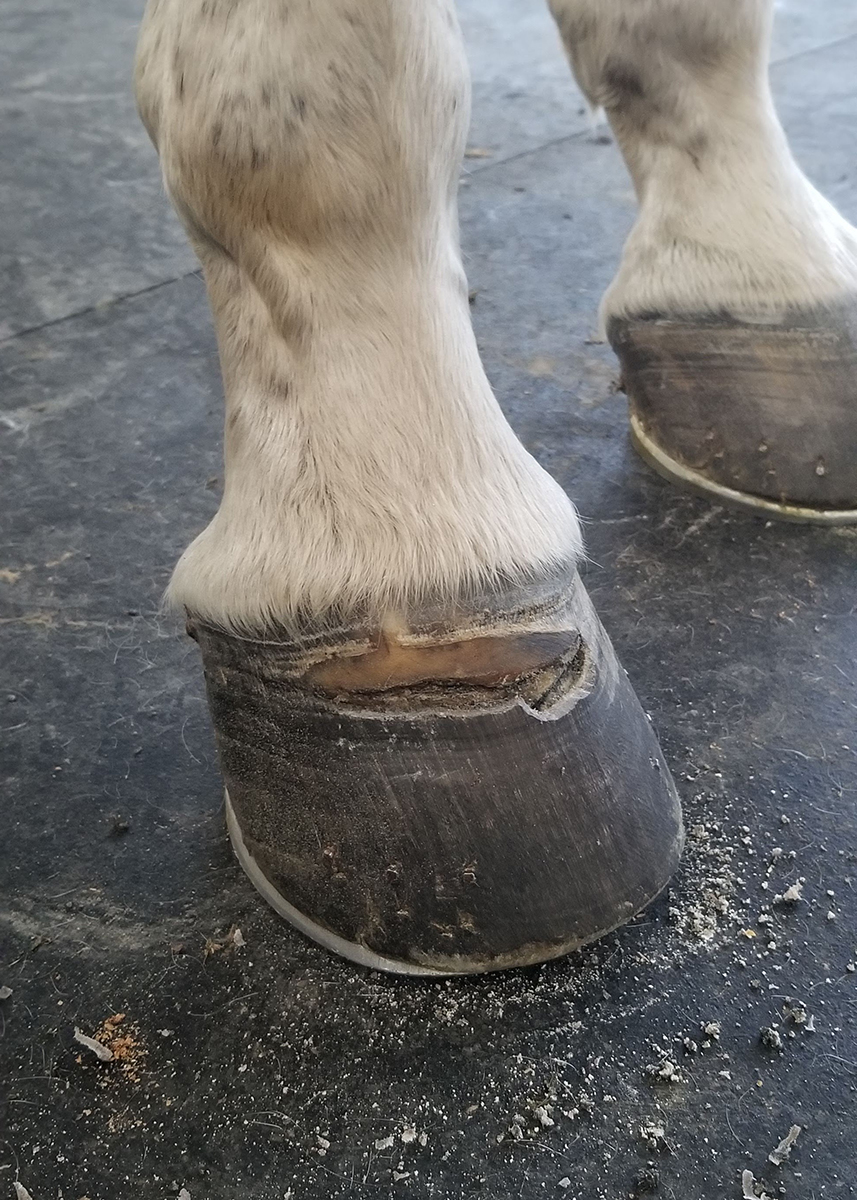Clinician and farrier work together to return polo pony to job she loves
October 26, 2021

Lexus, an 18-year-old quarter horse mare owned by Pamela Patton of Millersville, Maryland, visited the Equine Medical Center for the first time in early 2019, for evaluation of right front lameness.
Maureen Kelleher, clinical assistant professor of sports medicine and surgery, completed a thorough lameness evaluation, analyzing Lexus on hard and soft ground in a straight line and on a circle. While the mare was found to be mildly positive to distal limb flexion of her right front, a palmar digital heel block resolved the right front lameness on the straight line and the circle on soft ground, but she was still mildly evident to the right on a circle on hard ground.
Additional nerve blocks determined that Lexus had an issue in the foot region and the fetlock region. An MRI of both areas revealed deep digital flexor tendonitis and chronic changes to her navicular bursa.
Kelleher’s conclusion was that Lexus had stressed her deep digital flexor tendons and had chronic changes to her navicular bursa. Lexus’ owner was presented with several treatment options, all with the goal of making Lexus as comfortable as possible. The treatments included injections of platelet-rich plasma (PRP) into the mare’s damaged deep digital flexor tendons, along with shockwave treatment to encourage damaged areas to heal.

During the rehabilitation process for her soft tissue injuries, Lexus arrived with a pronounced dorsal hoof wall crack, and it was clear that an abscess had erupted through her coronary band, which required a resection of the area.
Equine Medical Center farrier Amy Sidwar-Seaver made changes to Lexus’ right front shoe, mindful of the mare’s previous injuries that had been diagnosed via MRI. The right front shoe was “rockered” with a lateral roll added to aid in breakover. The interior of the shoe was concaved to minimize any pressure to her toe, and the density of the sole support was decreased and changed to a silicone mixture consisting of betadine and copper sulfate. This mixture offered a lower shore rating (softness) than the previous packing.
“Dr. Kelleher and Amy Sidwar are my go-to team for solving sports medicine issues with my mare,” said owner Pam. “Dr. Kelleher walked me through the examination process to find out the underlying cause of Lexus’ lameness. She explained each diagnostic technique, from nerve blocking to X-rays to MRIs, and what each test was for, and she discussed the results. She then wrote up a detailed plan for Lexus’ treatment to include PRP and corrective shoeing. Amy provided details on how to maintain Lexus’ feet so that I could continue using my farrier at home.
“If I had any questions during Lexus’ recovery at home, Dr. Kelleher would review videos of Lexus on a lunge line to let me know how to proceed. It was a long two years of slow and steady progress, but it was worth it so that Lexus could be back out on the polo field doing what she does best: chasing a ball!”







